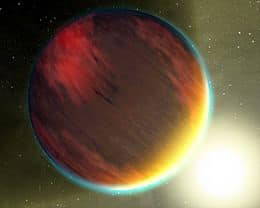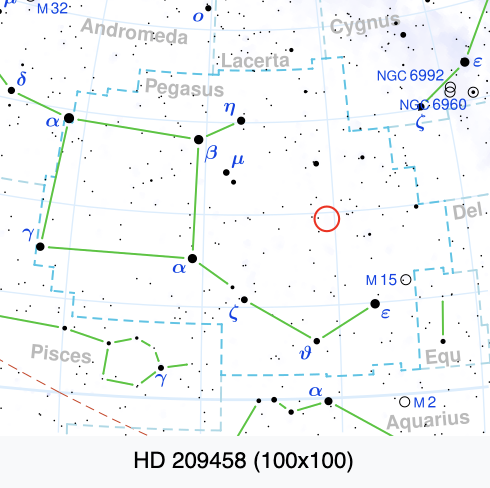🇬🇧 – 🇮🇹
In 1901 born the German astronomer Otto Hermann Hecmann (1901-1983), author of astronomical, photometric, stellar statistics and cosmological research, an expert in the design of advanced telescopes. He was the first director of the European Southern Observatory, an international astronomical organization for the observation and study of the sky in the southern hemisphere. He actively contributed to the creation of the Astronomische Gesellschaft Katalog, a star catalog started by Friedrich Argelander in 1867.
Nel 1901 nasce l’astronomo tedesco Otto Hermann Hecmann (1901-1983), autore di ricerche astronomiche, fotometriche, di statistica stellare e cosmologiche, esperto nella progettazione di telescopi di tipo avanzato. Fu il primo direttore dell’European Southern Observatory, organizzazione astronomica internazionale per l’osservazione e lo studio del cielo nell’emisfero australe. Ha contribuito attivamente alla creazione dell’Astronomische Gesellschaft Katalog, catalogo stellare iniziato da Friedrich Argelander nel 1867.

In 1905 The Wright Flyer III airplane, built by the Wright brothers, made the historic first flight of a heavier-than-air aircraft
Nel 1905 L’aeroplano Wright Flyer III, costruito dai fratelli Wright, compie il primo storico volo di un aeromobile più pesante dell’aria

Martin Rees was born in 1942, the last Royal Astronomer of England, master of Trinity College of the University of Cambridge since 2004, from 1 December 2005 to 2010 he was president of the Royal Society.
Nel 1942 nasce Martin Rees, ultimo Astronomo Reale d’Inghilterra, master del Trinity College dell’Università di Cambridge dal 2004, dal 1º dicembre 2005 al 2010 è stato presidente della Royal Society.

In 2008, NASA confirmed the presence of water on Mars, detected by the Phoenix probe, launched on August 4, 2007. William Boynton, a researcher at the University of Arizona, declares: “We had previously observed the presence of frozen water, but this is the first time the water on Mars was touched and examined.” The Phoenix Mars Lander’s mission ended on November 10, 2008, three months after its scheduled deadline.
Nel 2008 la Nasa conferma la presenza di acqua su Marte, rilevata dalla sonda Phoenix, lanciata il 4 agosto 2007. William Boynton, ricercatore della University of Arizona, dichiara: ”In precedenza avevamo osservato la presenza di acqua ghiacciata, ma questa è la prima volta che l’acqua su Marte è stata toccata ed esaminata”. La missione della Phoenix Mars Lander si è conclusa il 10 novembre 2008, tre mesi dopo il termine previsto.


In 2010, the news of the discovery of intense carbon monoxide (CO) winds in the atmosphere of the exoplanet HD 209458 b was disclosed. This planet (nicknamed Osiris) orbits the star HD 209458, a yellow dwarf similar to the Sun of magnitude 8 visible in the constellation Pegasus, which is about 150 light-years away from the solar system. Cover image: The image is a computer simulation reconstructed from a transmission spectrum taken with the Hubble Space Telescope’a Space Telescope Imaging Spectrograph, this is what the sunset looks like in the planet after the study of its athmosphere (text source https://www.popsci.com/science/article/2012-01/using-hubble-data-astronomer-visualizes-sunset-distant-planet/)
Nel 2010 viene divulgata la notizia della scoperta di intensi venti carichi di monossido di carbonio (CO) nell’atmosfera del pianeta extrasolare HD 209458 b. Questo pianeta (soprannominato Osiride od Osiris) orbita intorno alla stella HD 209458, una nana gialla simile al Sole di magnitudine 8 visibile nella costellazione di Pegaso, che dista circa 150 anni luce dal sistema solare. Nell’immagine di copertina vediamo una simulazione di un tramonto sul pianeta dopo uno studio sull’atmosfera: quando Osiris passa davanti alla sua stella, la luce stellare attraversa la sua atmosfera. La luce può essere studiata con uno spettrografo per determinare cosa contiene l’atmosfera e questo è il risultato dello spettrografo del telescopio spaziale Hubble

In 2022 BepiColombo 2nd fly-by with Mercury (200 km), the 3rd was on June 19th of 2023.
Nel 2022 BepiColombo 2° fly-by con Mercurio (200 km). Il terzo sorvolo è avvenuto il 19 giugno di quest’anno. Tutto sulla missione BepiColombo.
Text source: Wikipedia
Sostieni anche tu Wikipedia
Google translate
